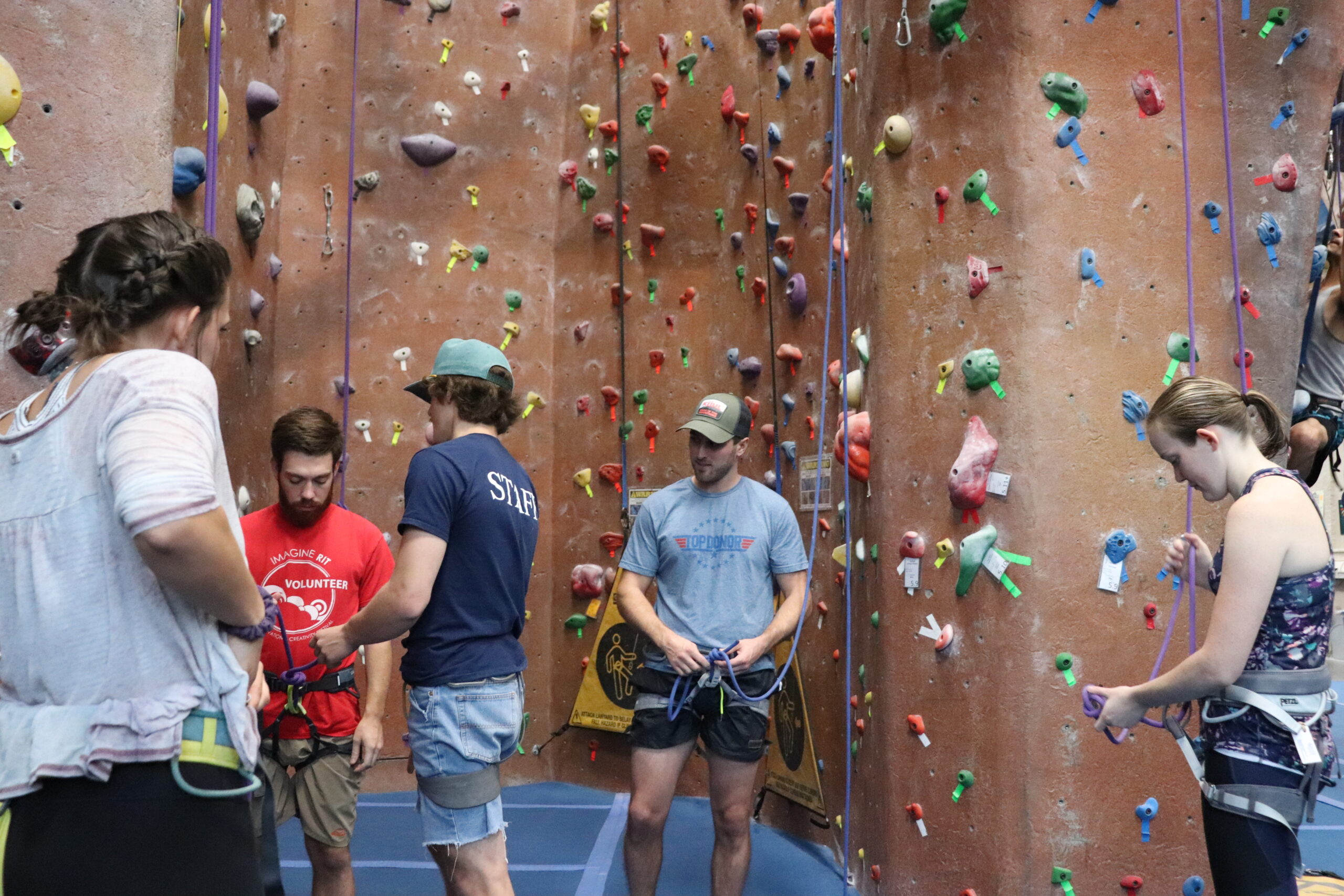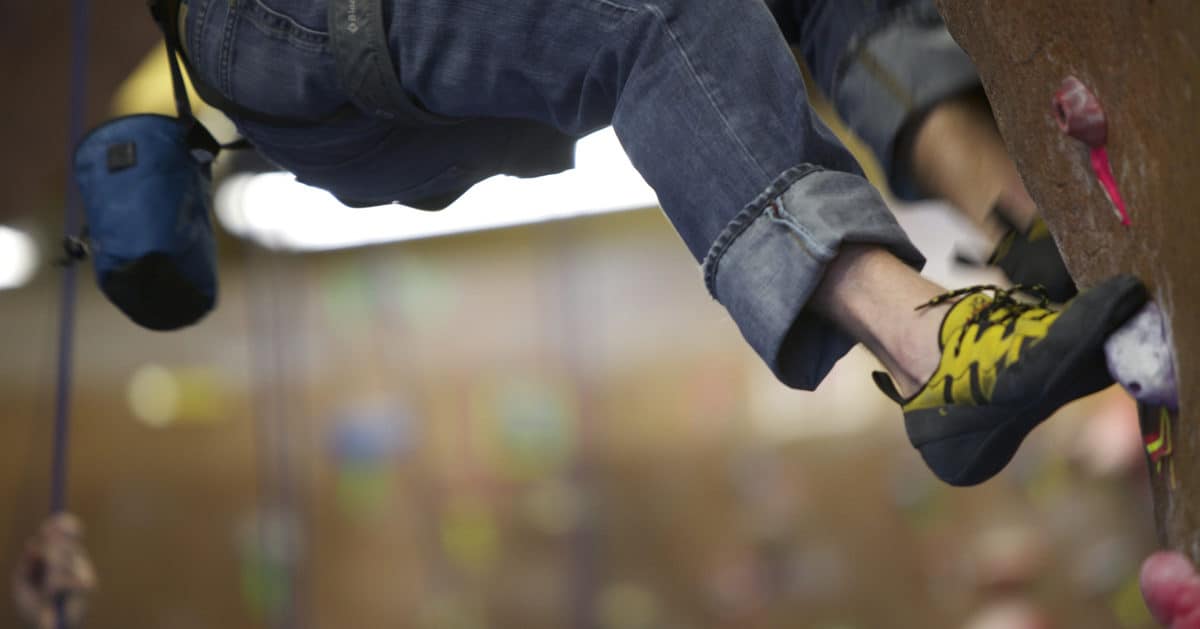A properly executed dyno, like many things in life, is an art and a science. (For the uninitiated, a dyno is the act of dynamically leaping from one spot on the wall to another.) It’s a stunt people love to gawk at and throw themselves at (literally), but one that few can do properly. Of course, every dyno is a little different, but each boils down to a few essentials: foot position + leg propulsion + hip alignment + monkey arms. That’s the science part — easy to identify and analyze. The art factor is the far more variable, far less tangible mindset that plays into the act. Let’s take a step-by-step look at each factor of a basic dyno.
Visualize the 45-degree wall at the gym. Now imagine a jug (a big, easy to grip hold) a quarter of the way from the floor. You grip the jug firmly with both hands and lift your feet off the ground to place them naturally onto two footholds. Your knees are bent (if you weren’t on the wall, you’d be squatting), and your arms are locked straight. You’re dangling by those monkey arms and you feel pretty comfortable: your body is now in the proper position. Now pick out your target. Imagine in this case it’s about three-and-a-half feet above the hold you have your hands on–or about four-and-a-half feet from the crown of your head. You’re staring it down, you already know how hard you’re going to have to push with your legs to get there, and you know how you’re going to grab hold of it once you’re up. Now assume the proper mindset. The exact makeup of this attitude differs from person to person, but usually it goes something like this: “Once I start going, I’m going all the way.” It’s the eradication of fear and what-ifs. It’s difficult to describe, but you’ll know it when you try.
So your body and mind are ready, now it’s time to go. Make sure your grip is rock solid. Get a little bounce going if you feel like it’s necessary, but don’t overdo it or you’ll psych yourself out. The moment that you start going, the mindset is everything. You have to decide right away that you’re going to commit. And if you wait too long and miss your chance, you’ve already failed. So mentally commit, and follow through. A dyno is very much a two-part process: lower body and upper body–in that order. It begins at your feet with their touch on the holds below. Your ankles are shifting simultaneously as you’re knees are beginning to open up. This is your propulsion. It’s just like you’re jumping from the ground, although this time you have your hands to guide you upwards. So your legs have to be in sync with your arms, and this is where hip alignment comes in… Keep it straight, and try to keep close to the wall. It matters. Because no matter how high you get, if you’re falling away from the wall because you weren’t close enough, then it’s very hard to succeed. You’ll know when to let go of that hold with your hands when it’s time, but it’s usually when it serves you no further purpose to continue holding it. Like I said, you’ll know.
There’s a moment where you feel like you’re flying…
And then you’re back on the wall. Game time for your upper body now. That hold you targeted before? Yeah, it’s time to grab that sucker. And grab it good and strong because gravity is going to catch up with you very quickly. If you can keep your hold, then congratulations–you’ve done it. Some routes continue on after a dyno, while others end with a dyno.
Some dynos make you ascend diagonally, while others direct you perfectly to the side. With others, you’ll be jumping backwards–from one wall to another. Some are easier and more natural feeling, while others seem to be a total reach (pun intended). Bottom line: there’s lots to try and tons to work on.
I hope I’ve helped to break down any barrier of fear that you may have mentally had towards the thought of doing something so dynamic. The rush of elation you get when you complete a dyno is incomparable in climbing, and I hope you’re inspired to try one yourself now.
TIP: It never hurts to have a partner ready to help out below. They won’t catch you (or at least they’re not supposed to), but should you fall, they’ll help guide you properly back to the ground so you don’t injure yourself on impact. The partner should be mindful to not stand directly beneath where the move will be taking place.
EYE CANDY: to get you pumped… watch this.

